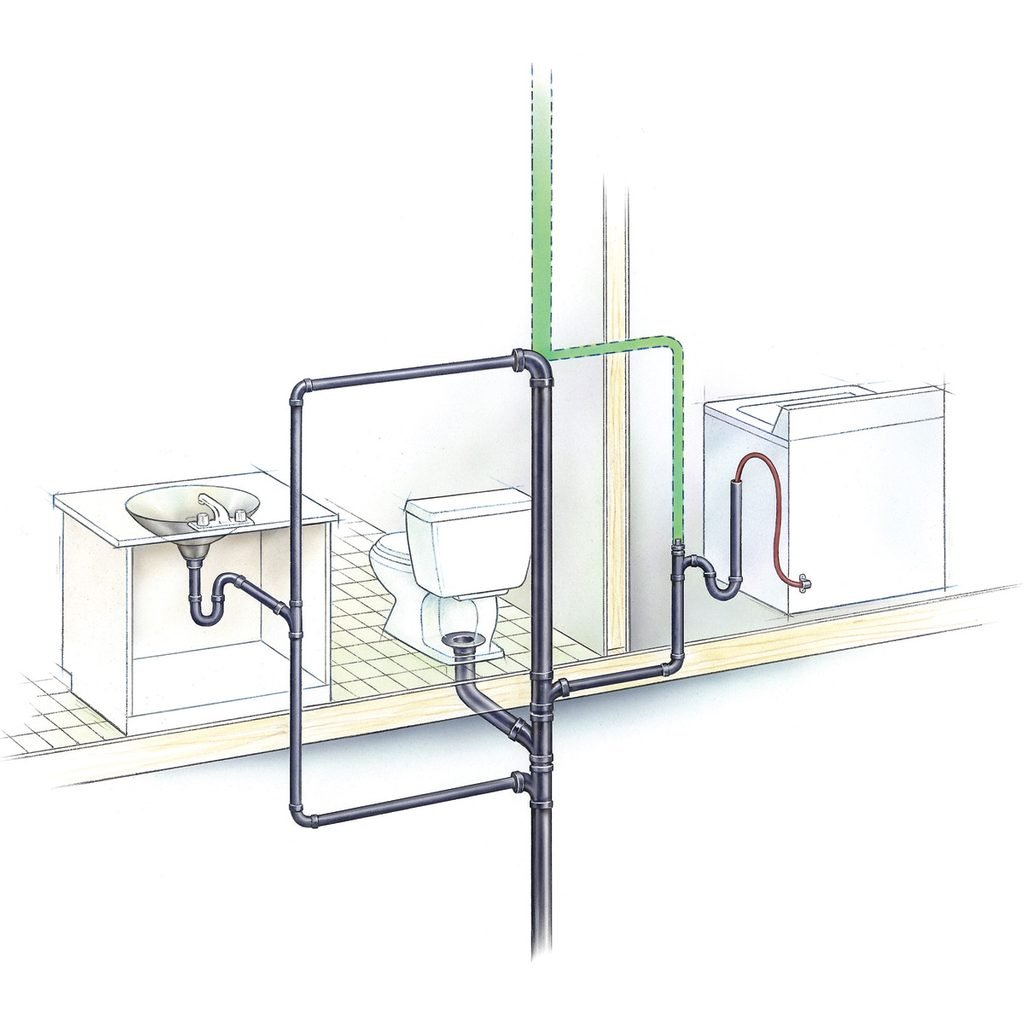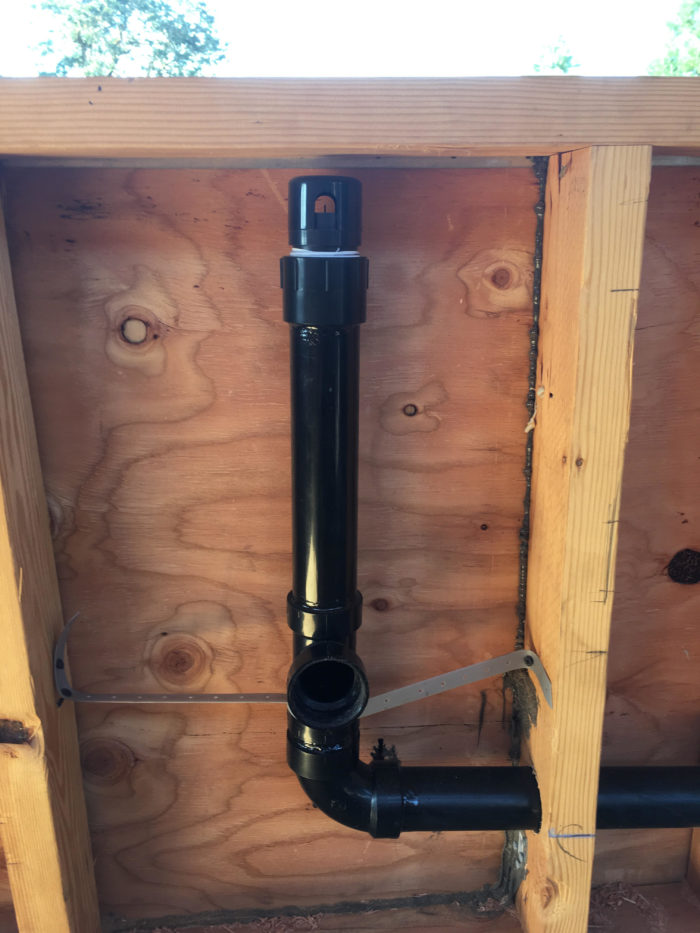Maintaining Correct Ventilation in Your Plumbing System: Why
Maintaining Correct Ventilation in Your Plumbing System: Why
Blog Article
Every person has got their personal conception with regards to The Upsides of Proper Ventilation in Plumbing Design.

Proper air flow in pipes systems is usually forgotten, yet it is critical for preserving the functionality and safety of your home's pipes. Air flow aids manage atmospheric pressure, protect against the accumulation of dangerous gases, and make certain the reliable elimination of waste. In this guide, we will discover the importance of proper pipes air flow, exactly how it functions, and the benefits it offers your pipes system.
How Air Flow Works in Pipes Systems
Air Pressure Regulation
Appropriate ventilation maintains well balanced air pressure within the plumbing system. When water streams through pipelines, it displaces air. Without adequate ventilation, this displacement can produce unfavorable stress, bring about slow down drains or siphoning of water from catches, which can trigger undesirable odors to leak right into the home.
Avoiding Sewage System Gas Accumulation
Among the most important features of plumbing vents is to avoid sewage system gases, such as methane and hydrogen sulfide, from accumulating within the home. These gases can position significant health and wellness dangers and are highly flammable. Vent pipelines allow these gases to escape safely outdoors.
Aiding in Waste Elimination
Air flow helps in the efficient elimination of wastewater by avoiding airlocks in the water drainage system. When air can move openly through the vents, it enables water and waste to stream smoothly through the pipes, reducing the danger of blockages and backups.
Advantages of Correct Ventilation
Boosted System Effectiveness
Appropriately aerated plumbing systems run a lot more efficiently, with fewer blockages, faster draining pipes, and less pressure on the pipes. This effectiveness expands the life-span of the pipes system.
Improved Air Quality
By protecting against sewer gases from entering your home, proper air flow adds to far better interior air quality, making your living environment healthier and more comfortable.
Avoiding Water Damage
Sufficient air flow helps avoid water from being siphoned out of catches, which can lead to drain gases entering the home and creating water damages in time.
Actions to Ensure Appropriate Air Flow
Consulting Plumbing Codes
Always seek advice from neighborhood pipes codes when making or modifying your pipes system. These codes supply the needed standards for appropriate airing vent and guarantee your system meets safety standards.
Normal Inspection and Maintenance
Normal examinations can aid recognize potential ventilation problems before they become significant problems. Upkeep tasks, such as cleaning up air vent pipes and checking for clogs, are necessary for keeping the system in good working order.
Professional Installation
For brand-new setups or major adjustments, it's smart to work with a professional plumbing. They have the know-how to make certain the ventilation system is properly created and mounted according to code.
Recognizing Air Flow in Pipes
Air flow in pipes describes the network of pipelines that permit air to stream through the drainage system. These vents offer several objectives, including regulating atmospheric pressure within the pipes, stopping sewage system gases from going into the home, and assisting in the smooth flow of wastewater.
Types of Pipes Vents
Main Stack Vent
The major stack vent, also known as the vent stack, is the key vent in a pipes system. It expands from the primary drainpipe align via the roofing, allowing gases to escape and fresh air to go into the system.
Branch Vent
Branch vents attach to the main stack vent and offer private components, such as sinks, commodes, and showers. These vents ensure that each component has ample air flow to operate properly.
Air Admittance Valve (AAV).
An Air Admission Shutoff (AAV) is a one-way shutoff that enables air to go into the plumbing system without the need for a conventional air vent pipeline prolonging with the roofing system. AAVs are commonly made use of in improvements or areas where setting up a conventional vent is impractical.
Indicators of Poor Air Flow in Plumbing.
Slow Draining Fixtures.
If your sinks, bathtubs, or bathrooms are draining pipes slowly, it could be an indication of poor ventilation. Insufficient air circulation can create a vacuum cleaner effect, making it difficult for water to drain properly.
Gurgling Appears.
Gurgling sounds originating from drains pipes are typically an outcome of air being sucked with water catches due to unfavorable stress in the pipelines. This is a clear indication of not enough ventilation.
Unpleasant Odors.
Sewer odors inside your home are a red flag that your plumbing system is not properly ventilated. This might indicate that drain gases are not being sufficiently vented outside, leading to potentially hazardous conditions.
Common Air Flow Blunders.
Inadequate Vent Sizing.
Utilizing small air vent pipelines can result in inadequate air circulation and pressure inequalities in the system. It's vital to use vents that meet the specific requirements of your pipes system.
Improper Vent Positioning.
Placing vents also far from the fixtures they serve can minimize their performance. Correct placement guarantees that air can move freely and efficiently with the system.
Disregarding Code Needs.
Building ordinance provide certain standards for plumbing air flow. Ignoring these codes can lead to a system that falls short to operate correctly and may cause pricey repairs or health hazards.
Conclusion.
Appropriate ventilation is an essential part of any kind of pipes system, ensuring that it functions efficiently and securely. By recognizing the importance of air flow, acknowledging the indicators of poor air flow, and taking actions to maintain your system, you can protect against costly problems and protect your home's air quality.
4 Things You Should Know About Your Plumbing Vents
What Plumbing Vents Are
Also called a vent stack, a plumbing vent is a vertical pipe attached to your drain line that runs through your roof. The plumbing vent pipe, or plumbing air vent, removes gas and odors from your plumbing system and allows fresh air to enter the pipes, helping the water to flow out of the drain pipes.
What Plumbing Vents Do
Plumbing vents have two basic functions. One of which is to allow unpleasant smelling wastewater and sewer gasses to escape your plumbing system instead of entering your home. Plumbing vent pipes are typically located on roofs, away from windows, to ensure the fumes exit the home completely.
The other function of the plumbing vent is to move fresh air into your plumbing system. This helps move water through every plumbing fixture in your house, like toilets and sink drains. Think of the way in which you need to let a little air into the bottle as you pour soda in order to make the drink flow smoothly.
Different Types of Plumbing Vents
True vent: This is the most common vent option. In simplest terms, a true vent is a vertical pipe attached to your drain line that exits through the roof. They often function as the main vent that other fixtures can connect to. Re-vent pipe or auxiliary vent: Attached to the drain line near specific plumbing fixtures, re-vent pipes run up and over to connect to the main vent. Common vent: Two plumbing fixtures installed on opposite sides of a wall are typically tied into the vent stack using something known as a sanitary cross. Wet vent: This venting option operates as a drain pipe and a vent at the same time. Wet vent drainage systems drain water from one fixture while venting the air from another. Although they’ve been used for over 100 years, wet vent systems have only recently been added to the plumbing code in many areas. If you’re planning on installing one in a bathroom remodel, make sure you check your local code prior to construction. Loop vent: For free-standing fixtures like kitchen island sinks, loop vents are ideal. These vent pipes run under the floor, rise from the P-trap, and create a loop inside the cabinet sink. Air admittance valve: An AAV is a one-way mechanical valve typically installed at the site of the plumbing fixture. AAVs allow venting to occur without having to tie into a larger venting system. They’re ideal for venting fixtures where you aren’t able to easily connect to an existing vent system. Common Plumbing Vent Issues
Although vent pipes typically don’t have water flowing through them, they’re still subject to many typical plumbing issues. For example, clogs are one of the most common problems associated with sewer vent pipes. If your vent pipe gets clogged, all of your plumbing fixtures tied into the vent stack will be affected.
A sink with a slow drain that bubbles and gurgles or a strong sewage smell around your toilet are both indicators that your toilet vent pipe is clogged. Because most vent pipes exit through the roof, old leaves, twigs or even a bird’s nest could be clogging the pipe.
Clogs in your vent pipe system cause a buildup of negative pressure, meaning that water won’t be able to flow out of your home very well. It’s similar to putting your finger over the opening of a straw to trap water inside. When you remove your finger, the water is able to flow out of the straw.
If you suspect you have any blockage in your vent, make sure you have a professional come examine the situation. Left unchecked, a blocked air vent can lead to other costly repairs, like leaks and sediment buildup.
Under Pressure
Pipe vents are essential aspects of a home’s plumbing system. Owning a home means learning about all sorts of things you never put much thought into before. But by understanding as much as you can about the important systems of your home, you can keep those budgets intact and those anxiety levels low.
https://www.homeserve.com/en-us/blog/home-improvement/plumbing-vents/

Do you like reading up on What Is a Plumbing Vent and Why Is It Important? Put a remark down the page. We will be happy to know your suggestions about this review. In hopes to see you back again later on. If you enjoyed reading our article plz consider to pass it around. I value your readership.
Rates Report this page